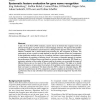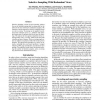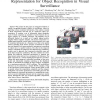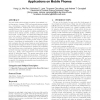59 search results - page 11 / 12 » Active Learning to Recognize Multiple Types of Plankton |
BMCBI
2005
13 years 7 months ago
2005
In task 1A of the BioCreAtIvE evaluation, systems had to be devised that recognize words and phrases forming gene or protein names in natural language sentences. We approach this ...
AAAI
2000
13 years 9 months ago
2000
Selective sampling, a form of active learning, reduces the cost of labeling training data by asking only for the labels of the most informative unlabeled examples. We introduce a ...
TCSV
2011
13 years 2 months ago
2011
—We present in this paper an integrated solution to rapidly recognizing dynamic objects in surveillance videos by exploring various contextual information. This solution consists...
ICMLA
2010
13 years 5 months ago
2010
Abstract--Clinical electroencephalography (EEG) is routinely used to monitor brain function in critically ill patients, and specific EEG waveforms are recognized by clinicians as s...
MOBISYS
2009
ACM
14 years 8 months ago
2009
ACM
Top end mobile phones include a number of specialized (e.g., accelerometer, compass, GPS) and general purpose sensors (e.g., microphone, camera) that enable new people-centric sen...




